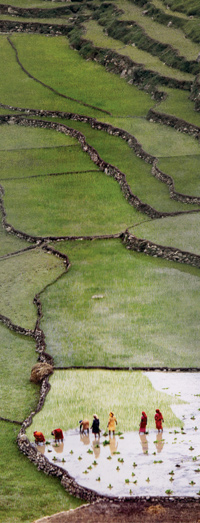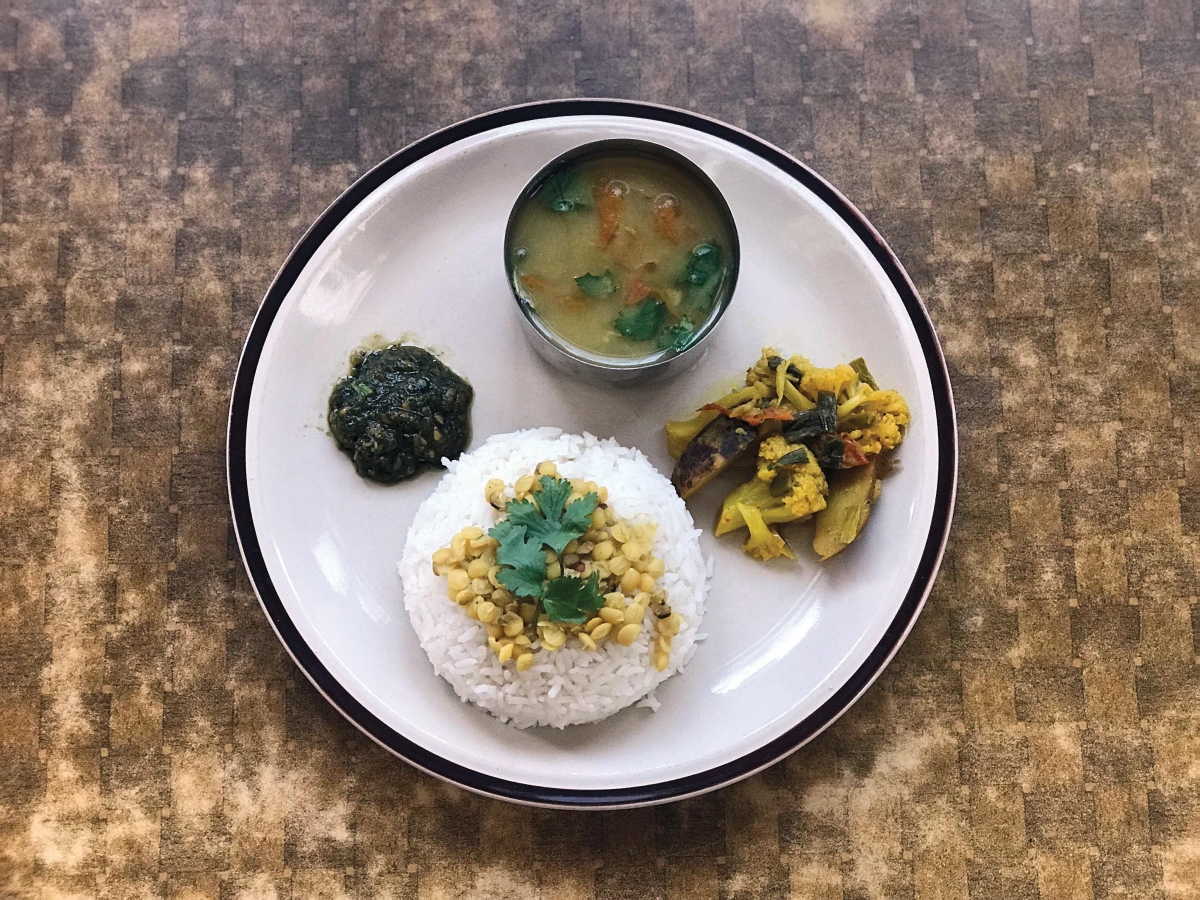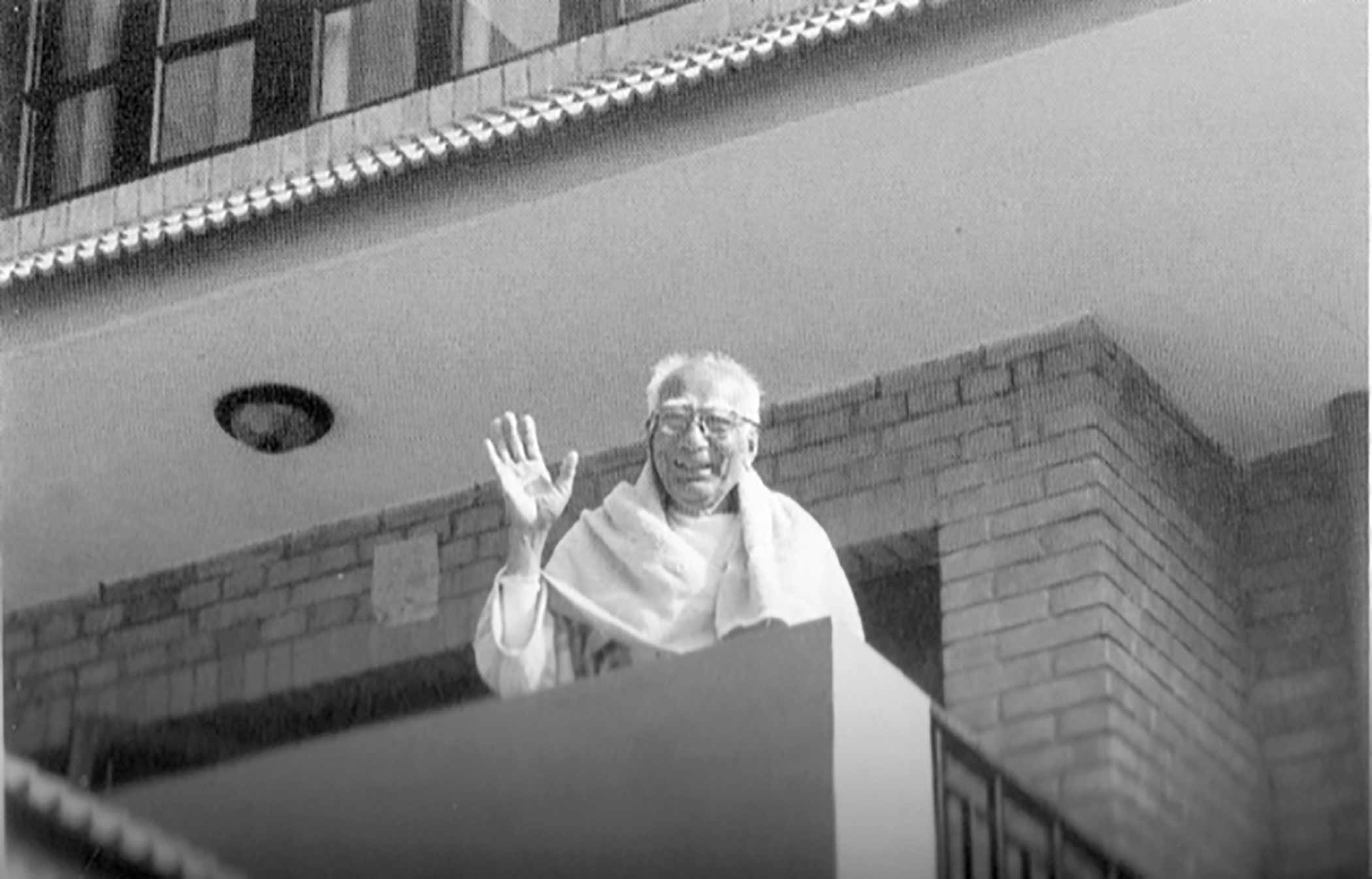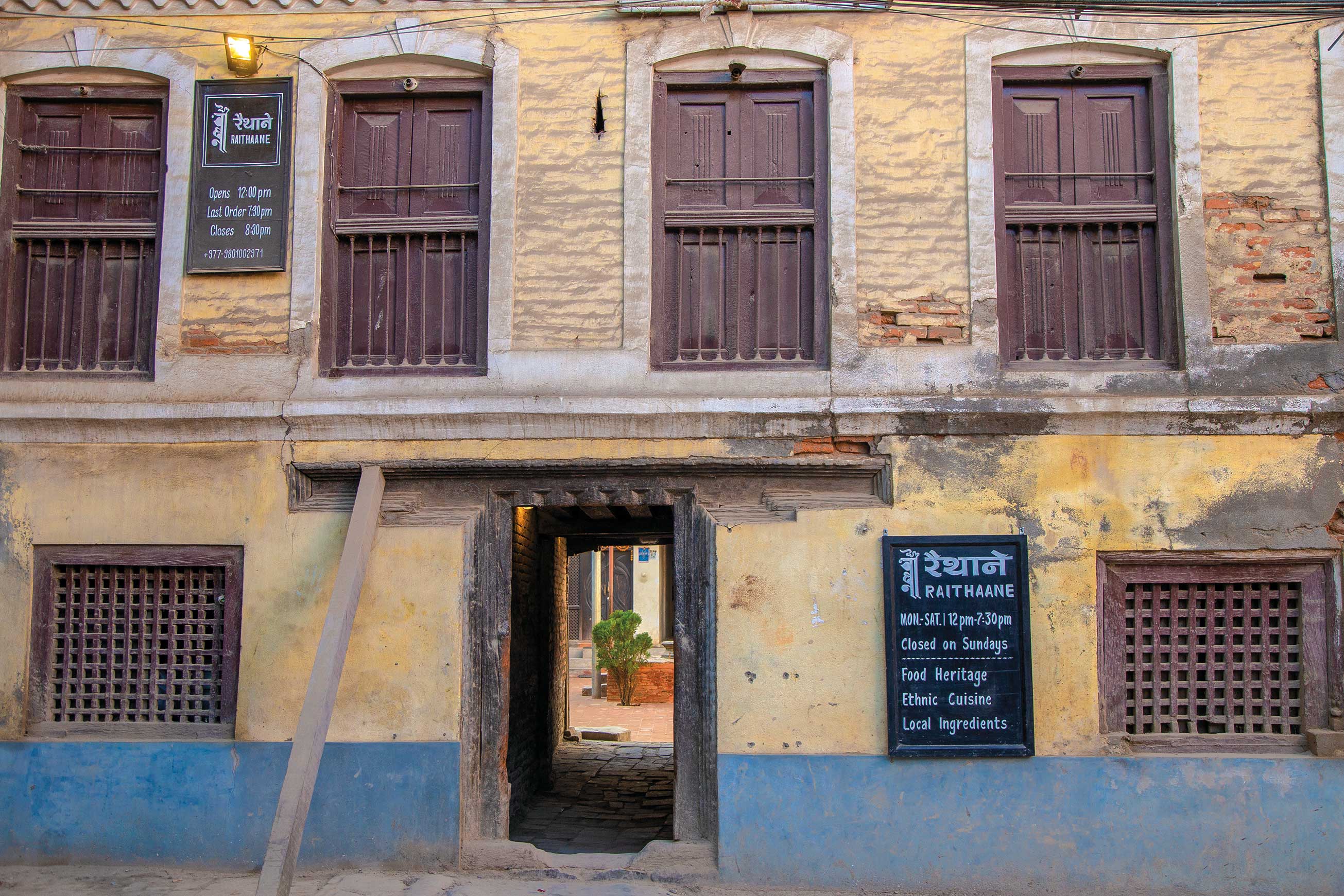“ ‘Have you eaten?’ is the same as ‘How are you?’ in the Nepali context. This standard conversational gambit shows the place of food in our culture.”
– Anil Chitrakar
The Life of Food in Nepal “is a powerful portrayal of the incredible beauty, diversity and harshness of Nepal’s landscape and a tribute to the resilient spirit of her farmers.”
– from the Acknowledgments
In Nepali culture when food tastes good, something looks great, or the written or spoken word sounds nice, it is common to say that it is ‘mitho’ – loosely, ‘sweet’. More expansively ‘mitho’ means delicious, tasty or appetizing (food); nice, interesting or beautiful (things); and softspoken, charming or persuasive (words).
While seeking the appropriate term to describe this remarkable book, ‘mitho’ comes immediately to mind, in all its contexts. As a book, it is beautiful. It’s about Nepali food in all its culinary variety and gustatory glory, from seeds-in-the-field, to harvest and the market place, and on to the dinner platter on normal days and at festivals. It is basically a book of photos, dozens of them in full color, some of which cover whole pages. There are also short essays, plus an introduction and a brief description of the UN World Food Programme.
 The idea for this publication was developed by the former World Food Programme Country Director Richard Ragan and local photographer James Giambrone. This remarkable collaboration first came to light as a photo exhibition held at the Nepal Arts Council in July 2010. The published version features over a 100 pages of photos from 18 photographers, and ten short essays from six authors. They include l Anil Chitrakar’s ‘My tribute to a book about food’ and the section introductions - ‘The food’, ‘The land’, ‘The life’ and ‘The ritual’; l Sujeev Shakya’s ‘From farm to market’ (on the need to support farmers, and the rise of farmers’ cooperatives); l Muna Gurung’s ‘Sishnu’ (heaping praise on the stinging nettle, including a recipe for nettle soup); l Bibek Bhandari’s ‘Potato’ (the lowly “meat to the poor” that revolutionized Nepali farming after its introduction to the Himalayas in the 18th century); l Prawin Adhikari’s ‘A certain kind of loss’ (about the traditional preparation of a once popular yam-like wild tuber); and l Utsav Shakya’s ‘Yomari’ (the mythology and festivity associated with this popular Newari sweet).
The idea for this publication was developed by the former World Food Programme Country Director Richard Ragan and local photographer James Giambrone. This remarkable collaboration first came to light as a photo exhibition held at the Nepal Arts Council in July 2010. The published version features over a 100 pages of photos from 18 photographers, and ten short essays from six authors. They include l Anil Chitrakar’s ‘My tribute to a book about food’ and the section introductions - ‘The food’, ‘The land’, ‘The life’ and ‘The ritual’; l Sujeev Shakya’s ‘From farm to market’ (on the need to support farmers, and the rise of farmers’ cooperatives); l Muna Gurung’s ‘Sishnu’ (heaping praise on the stinging nettle, including a recipe for nettle soup); l Bibek Bhandari’s ‘Potato’ (the lowly “meat to the poor” that revolutionized Nepali farming after its introduction to the Himalayas in the 18th century); l Prawin Adhikari’s ‘A certain kind of loss’ (about the traditional preparation of a once popular yam-like wild tuber); and l Utsav Shakya’s ‘Yomari’ (the mythology and festivity associated with this popular Newari sweet).
Insights on the meaning of food in the Nepali cultural context permeate the book. They begin with an observation by the WFP’s Richard Ragan in the Foreword, harkening back to that age-old notion that “You are what you eat,” and on to reveal the deep association between Nepali people and their cuisine that “goes way beyond that of simple sustenance...” Ragan writes that “Ritual and a daily dedication to spirituality permeates this land” a combination that he characterizes as “a marriage where food always features heavily...” He concludes with this observation: “To the crops they grow, the Nepalese award the highest honour; they pass it to the Gods. In no other place on earth will you find food accorded such spirituality and respect.” Ultimately, the book celebrates the central role that food plays in the lives of the Nepalese.
It says and portrays more about the daily life of the people, rich and poor, east to west, rural and urban, and from the lowlands across the mid-hills to the high mountains, than most other coffee-table sized picture books on Nepal. And, although it is a UN World Food Programme production, it is thankfully not strewn with UN logos and other hagiographic hype. Instead, it gives us a simple, genuine look at the story of food through the eyes and experiences of the people, especially Nepalese farmers.
U.N. World Food Program/Nepal, 2010, 120pp., profusely illustrated. Available at Vajra Books, the Patan Museum Gift Shop, Indigo Gallery and other bookstores.









